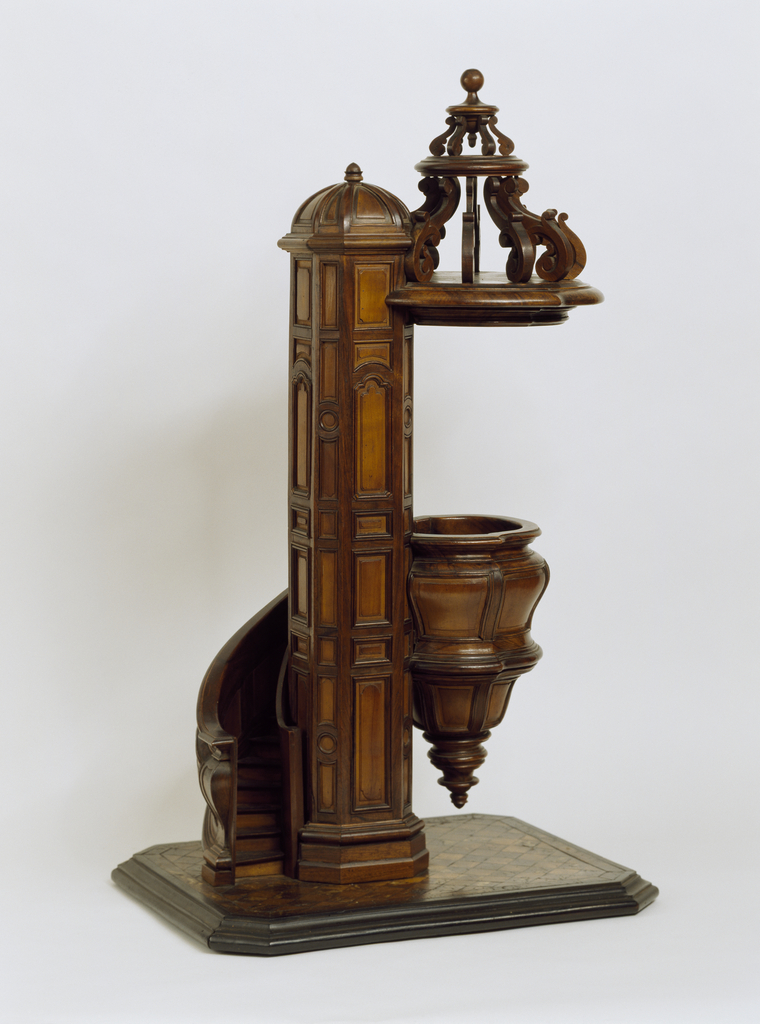There are many types of staircase models in the Thaw collection, much of which was donated in 2007 to Cooper Hewitt, to coincide with an exhibition Made to Scale: Staircase Masterpieces The Eugene and Clare Thaw Gift that I was lucky enough to curate after studying their significance for the acquisition. Joan K. Davidson, whose mother Alice Kaplan was a friend of the Thaws and a major force in saving the Cooper Hewitt collection as a museum as was Eugene Thaw, had a large metal example that inspired the Thaws to start with their own collection. Thus, this collection represents not only a wonderful selection of design objects but a personal tie to a group of people who united, when confronted with the possibility that the whole Cooper Hewitt collection might be sold, to raise the money, find the institution to take it on as a museum, and the venue for it, through donation from the Carnegie Corporation of the Carnegie Mansion to the Smithsonian Institution. So, not only does the Carnegie Mansion have a great staircase at its core, but right next to it, in the former Billiards room will soon be seen a Models Room, with some of these staircase models collected and given by Eugene V. and Clare E. Thaw, connecting the collection to the saving of Cooper Hewitt through them, Alice Kaplan, and Joan Davidson.
While a pulpit might seem a surprising choice for a staircase model, this example actually represents a spiral staircase worked around a central support, that uses its terminal as the well for the actual pulpit, raised high so the preacher could speak out to a large congregation. The whole design concept of working around a column is one illustrated in the book: L’art du menuisier, vol. 1, plate 90, “Plan et él’evation d’une chaire à prêcher immobile”, written and designed by André-Jacob Roubo (1739-1791) Published by Académie Royale des Sciences, Paris, France, 1769-75. This book, issued in sections, was a bible to the cabinetmaker-joiners of the title, but, as it was well illustrated with both elevations and plans, served as inspiration for those studying design in the compagnonnage system in France. This system expected masterworks from those completing their studies in design drawing and making within their stated skill area. In this case, the maker would have been more than just a joiner, as he also created molded, and veneered panels, and did so on very difficult curved bombé surfaces. In addition, he showed with the base marquetried to simulate a patterned floor, that he had inlay and marquetry skills as well. He almost certainly took off from the Roubo illustration but made his rather a more baroque concept with its inverted-pear shaped pulpit and bulbous curve to the outside of the staircase, not to mention the s-scroll carvings that form the canopy.
The joining of printed sources of a master, with creative skills of another results in a stunning example of proportioned design of great execution.
This staircase model will be on view beginning December 12th in the Models & Prototypes Gallery, one of Cooper Hewitt’s opening exhibitions.
Sarah Coffin is the Head of the Product Design and Decorative Arts Department at Cooper Hewitt Smithsonian Design Museum. She curated, among other exhibitions, Made to Scale: Staircase Masterpieces The Eugene and Clare Thaw Gift and the soon-to-re-open Models Room exhibition.
